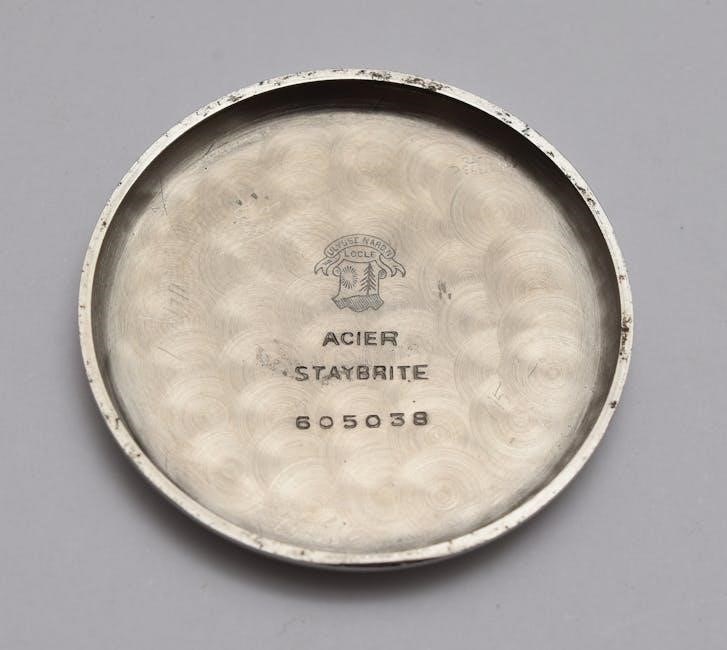rich dad poor dad free pdf
Rich Dad Poor Dad by Robert Kiyosaki explores financial literacy and wealth-building strategies, contrasting traditional employment with entrepreneurship and investing. Available as a free PDF, it offers insights into achieving financial independence, emphasizing the importance of financial education over traditional schooling.
1.1 Overview of the Book and Its Author, Robert Kiyosaki

Robert Kiyosaki, a renowned entrepreneur and investor, authored Rich Dad Poor Dad, a bestselling book contrasting financial strategies learned from his two father figures. His “rich dad” taught him wealth-building through investments and entrepreneurship, while his “poor dad” emphasized traditional education and salary work. Kiyosaki advocates for financial independence, challenging conventional views on money and work. His insights have inspired millions, making the book a cornerstone of modern personal finance literature, now widely available as a free PDF for global readers.

1.2 The Central Theme: Financial Education and Wealth Building
The core of Rich Dad Poor Dad lies in the importance of financial education and wealth-building strategies. Kiyosaki emphasizes that traditional schooling often neglects financial literacy, leaving people unprepared to manage money effectively. He advocates for investing in assets that generate income, rather than relying on a salary. The book challenges readers to rethink their relationship with money, focusing on financial independence and long-term wealth creation. Available as a free PDF, it offers practical advice for transforming one’s financial mindset and building a secure future through smart investments and entrepreneurship.

Key Lessons from “Rich Dad Poor Dad”
The book teaches financial independence by making money work for you, emphasizing financial education, and investing in income-generating assets to transform your mindset for wealth-building.
2.1 The Rich Don’t Work for Money; Money Works for Them
In Rich Dad Poor Dad, Robert Kiyosaki highlights that the wealthy acquire assets that generate income, such as real estate or businesses, rather than relying on a salary. This mindset shift emphasizes creating passive income streams, allowing money to work tirelessly. The poor, in contrast, often trade time for money, limiting their financial growth. By understanding this principle, readers can begin building wealth and moving toward financial independence, aligning with Kiyosaki’s core teachings on money and prosperity.
2.2 Financial Education Is Your Greatest Asset
Robert Kiyosaki emphasizes that financial education is the cornerstone of wealth-building. Unlike traditional schooling, which focuses on earning a paycheck, financial literacy teaches how to manage, invest, and grow money. Understanding taxes, accounting, and investing empowers individuals to make informed decisions. Kiyosaki argues that without this knowledge, people remain trapped in the cycle of working for money. By prioritizing financial education, readers can unlock opportunities to build passive income streams and achieve long-term prosperity, aligning with the book’s central message of financial independence.
2.3 The Importance of Investing in Assets, Not Liabilities
Robert Kiyosaki stresses the importance of distinguishing between assets and liabilities. Assets generate income, such as real estate or stocks, while liabilities drain resources, like personal cars or loans. Acquiring assets is key to wealth accumulation, as they create passive income streams. Kiyosaki warns against confusing liabilities with assets, emphasizing that true wealth lies in owning income-producing assets. This principle is central to his philosophy of financial freedom, encouraging readers to focus on building a portfolio that generates wealth rather than depleting it.
2.4 Pay Yourself First: Prioritizing Financial Independence
Robert Kiyosaki emphasizes the importance of “paying yourself first,” a strategy to prioritize financial independence. This means setting aside money for investments and savings before paying bills or expenses. By doing so, individuals ensure they build wealth over time. Kiyosaki argues that this mindset shift helps people avoid the cycle of living paycheck to paycheck. Automating this process can make it easier to stick to, ensuring long-term financial growth and security. This principle is a cornerstone of his approach to achieving financial freedom.

The Mindset of the Rich vs. the Poor
The rich focus on building wealth through investments and financial independence, while the poor often rely on salaries and view money through a lens of scarcity and fear.
3.1 How the Rich Think About Money and Opportunities
The rich view money as a tool to generate more wealth, focusing on investments and passive income. They seek opportunities to grow their assets, embracing calculated risks and financial literacy. Unlike the poor, who often see money as a means to survive, the rich prioritize wealth-building strategies and long-term financial independence.
Robert Kiyosaki emphasizes that the rich mindset revolves around creating systems that produce income, rather than relying on a salary. This approach fosters a culture of entrepreneurship and smart investing, enabling them to thrive in economic uncertainties and build lasting legacies.
3.2 The Poor Dad’s Limiting Beliefs About Money and Security
Poor Dad believed in job security, saving money, and avoiding financial risks. He viewed money as a means to survive, emphasizing hard work and a stable paycheck. His mindset focused on safety and predictability, often discouraging entrepreneurship and investing. This limiting belief system led to a cycle of financial dependence, as he prioritized earning a living over building wealth. His approach to money was cautious and risk-averse, contrasting sharply with the rich dad’s proactive and growth-oriented financial strategies.
3.3 Transforming Your Mindset for Financial Success
Transforming your mindset involves shifting from fear and doubt to confidence and calculated risk-taking. It requires embracing financial education and understanding that money is a tool, not an end goal. By breaking free from limiting beliefs, you can adopt a growth-oriented perspective, focusing on investing in assets that generate income. This mindset change encourages entrepreneurship, smart risks, and long-term wealth-building strategies, aligning with the principles outlined in Rich Dad Poor Dad.

The Role of Entrepreneurship and Taking Risks
Entrepreneurship is key to building wealth, as it creates income-generating assets. Taking risks is essential for financial freedom, teaching individuals to embrace uncertainty and innovate, as Kiyosaki advises.
4.1 Why Entrepreneurship Is Key to Building Wealth
Entrepreneurship is crucial for wealth creation, as it generates passive income and builds assets. Robert Kiyosaki emphasizes that entrepreneurs create systems that produce money, unlike traditional jobs. By taking risks and innovating, entrepreneurs bypass the limitations of a salary. Kiyosaki warns that relying on a paycheck traps individuals in a cycle of financial dependence. He advocates for investing in businesses and assets that yield income, rather than seeking security in a 9-to-5 job. This mindset shift is central to his philosophy of achieving financial freedom.
4.2 Embracing Risk as a Path to Financial Freedom
Embracing risk is essential for achieving financial freedom, as it often leads to significant rewards. Robert Kiyosaki emphasizes that the wealthy take calculated risks to build wealth, while the poor avoid risk, remaining stuck in financial insecurity. Risk-taking, such as investing in assets or starting a business, requires courage and financial literacy. Kiyosaki argues that playing it safe financially can lead to stagnation, while educated risks can create opportunities for passive income and long-term prosperity. This mindset is central to his philosophy of financial independence.
The Importance of Financial Literacy
Financial literacy is crucial for managing money effectively and building wealth. It empowers individuals to make informed decisions about investing, taxes, and budgeting, fostering long-term financial success.
5.1 Understanding Taxes, Accounting, and Investing
Understanding taxes, accounting, and investing is essential for financial literacy. Taxes impact wealth accumulation, while accounting helps track financial health. Investing requires knowledge of assets, markets, and risks. Robert Kiyosaki emphasizes mastering these areas to build wealth effectively, as highlighted in Rich Dad Poor Dad. By grasping these concepts, individuals can make informed decisions, optimize returns, and avoid costly mistakes, ultimately achieving financial independence and security.
5.2 How Financial Literacy Can Change Your Life

Financial literacy empowers individuals to make informed decisions, transforming their relationship with money. It helps break the cycle of living paycheck to paycheck, enabling wealth creation and long-term security. By understanding how money works, people can avoid debt traps, invest wisely, and build passive income streams. Financial literacy fosters a mindset shift, turning money from a source of stress into a tool for freedom. As highlighted in Rich Dad Poor Dad, it’s the foundation for achieving financial independence and living a life of purpose and prosperity.
The Debate: Traditional Education vs. Financial Literacy
Traditional education often overlooks financial literacy, focusing on academic achievements over money management. Rich Dad Poor Dad argues that financial skills are more vital for long-term success than degrees.
6.1 The Limitations of Traditional Education in Teaching Finance
Traditional education systems often fail to provide practical financial knowledge, focusing instead on academic theory. This leaves many graduates unprepared to manage money effectively. Rich Dad Poor Dad highlights this gap, emphasizing that schools rarely teach essential skills like investing, tax strategies, or entrepreneurship. As a result, individuals must seek alternative resources, such as free PDF versions of the book, to gain the financial literacy needed for real-world success and independence.
6.2 Why Financial Literacy Should Be Taught from a Young Age
Teaching financial literacy early fosters a strong foundation for future success. Rich Dad Poor Dad advocates for introducing concepts like investing and money management in childhood. This approach helps individuals develop healthy financial habits and avoid common pitfalls. By starting early, people can make informed decisions, build wealth, and achieve independence. Free PDF resources like Kiyosaki’s book provide accessible tools for parents and educators to instill these crucial lessons in young minds, setting them up for long-term financial stability and confidence.
The Impact of “Rich Dad Poor Dad” on Readers
Rich Dad Poor Dad has inspired millions globally, empowering readers to pursue financial freedom. Its lessons on wealth-building and money management have transformed lives, making it a life-changing resource available as a free PDF.
7.1 How the Book Has Inspired Financial Freedom Worldwide
Rich Dad Poor Dad has sparked a global movement toward financial independence. Readers worldwide have embraced its principles, transforming their lives by adopting entrepreneurial mindsets and investing in assets. Many credit the book with inspiring them to start businesses, invest wisely, and break free from debt cycles. Its accessible lessons, now available as a free PDF, have empowered individuals to take control of their finances, fostering a community dedicated to achieving financial freedom and living fulfilling lives.
7.2 Real-Life Success Stories of Readers Who Applied the Lessons
Many readers of Rich Dad Poor Dad have shared inspiring stories of transforming their financial lives. One individual started a successful real estate business after applying the book’s investment strategies. Another reader paid off significant debt and built a portfolio of income-generating assets; These stories highlight how the book’s principles, now accessible as a free PDF, have empowered people to take control of their finances, achieve independence, and create lasting wealth through actionable insights and mindset shifts.
Robert Kiyosaki’s Predictions and Warnings
Robert Kiyosaki warns of impending market crashes and economic instability, advocating for tangible assets like gold, silver, and cryptocurrency to safeguard wealth. His predictions emphasize the importance of financial preparedness and diversification to navigate future uncertainties, as outlined in his book, now available as a free PDF.
8.1 Predictions About Market Crashes and Economic Changes
Robert Kiyosaki has consistently warned of an impending global market crash, emphasizing its potential to devastate retirement savings, particularly for Baby Boomers. He predicts significant economic shifts, urging investors to pivot toward tangible assets like gold, silver, and cryptocurrencies such as Ethereum. Kiyosaki advocates for financial preparedness, highlighting the vulnerabilities of traditional investment strategies. His warnings align with his long-standing advice to build wealth through diversification and entrepreneurship, as detailed in Rich Dad Poor Dad, now accessible as a free PDF for those seeking financial insight.
8.2 The Importance of Tangible Assets Like Gold, Silver, and Cryptocurrency
Robert Kiyosaki strongly advocates for investing in tangible assets like gold, silver, and cryptocurrency to safeguard wealth against economic instability. He emphasizes that these assets retain value better than fiat currency, which can be devalued by inflation. Kiyosaki particularly highlights Bitcoin as a modern alternative to traditional precious metals, urging investors to diversify their portfolios. With silver prices surging and cryptocurrencies gaining traction, his advice resonates with those seeking financial security, as outlined in Rich Dad Poor Dad, now available as a free PDF.

How to Access “Rich Dad Poor Dad” for Free
Access Rich Dad Poor Dad for free by checking local libraries, free eBook platforms, or official sources offering legal downloads, ensuring compliance with copyright laws.
9.1 Legal Ways to Download or Read the Book

Accessing Rich Dad Poor Dad for free can be done legally through libraries, free eBook platforms, or official sources offering promotional downloads. Many public libraries provide digital copies for borrowing. Additionally, some websites offer free PDF versions for educational purposes, ensuring compliance with copyright laws. Always verify the source’s legitimacy to avoid illegal downloads. Checking for promotions or giveaways from authorized distributors is another way to obtain the book legally without violating copyright regulations.
9.2 Resources for Finding Free PDF Versions Online
Several platforms offer free PDF versions of Rich Dad Poor Dad for download. Popular options include Google Books, Scribd, and library websites like OverDrive. Additionally, websites such as PDF Drive or Free-Ebooks.net often host free versions. When searching, use keywords like “Rich Dad Poor Dad free PDF download” to locate reliable sources. Always verify the legitimacy of the website to ensure safety and avoid copyright infringement. Some authors or publishers may also offer free downloads during promotions or giveaways.
Rich Dad Poor Dad inspires financial freedom through education and investing. Accessing it as a free PDF democratizes wealth-building knowledge, empowering readers globally to take control.
10.1 The Lasting Legacy of “Rich Dad Poor Dad”
Rich Dad Poor Dad has left an indelible mark on personal finance, inspiring millions to rethink money and wealth. Its emphasis on financial education and entrepreneurship has sparked global conversations, empowering individuals to pursue financial independence. As a free PDF, it continues to democratize access to life-changing knowledge, ensuring its legacy endures as a cornerstone of modern financial literacy and a catalyst for economic empowerment worldwide.

10.2 Encouragement to Take Action Toward Financial Freedom
Embrace the wisdom of Rich Dad Poor Dad by taking immediate action toward financial freedom. Start by downloading the free PDF and absorbing its life-changing lessons. Invest in assets, prioritize financial education, and adopt an entrepreneurial mindset. Break free from limiting beliefs and take control of your financial future. The time to act is now—transform your life by applying Robert Kiyosaki’s principles and securing a prosperous tomorrow. Visit richdad.com or similar platforms to access resources and begin your journey today.
















































































